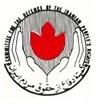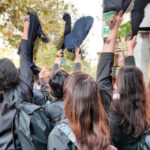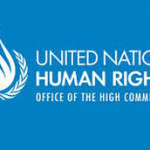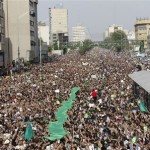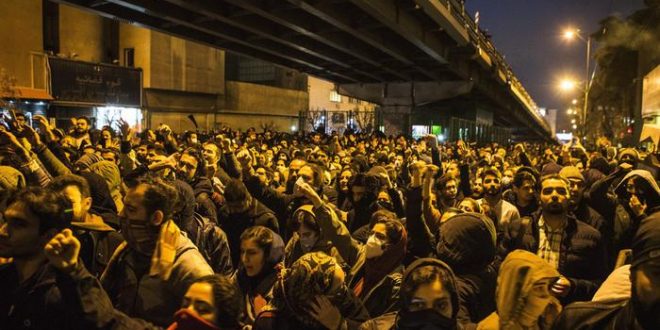
12th January 2020
The assassination of the commander of the Islamic Revolution Guard Corps, Qasem Soleimani, has sparked a further round of uncertainty in the Middle East and brought the danger of increased conflict closer. Jane Green assesses the current situation.
The death toll following the assassination, by the United States, of Islamic Revolution Guard Corps (IRGC) commander, General Qasem Soleimani, currently runs at over two hundred, with over 60 civilians being crushed in scenes of grief at Soleimani’s funeral and 176 deaths in the shooting down of the Ukranian civilian airliner, which the Iranian regime has admitted was a tragic mistake.
Neither of these events would have taken place without the assassination of Soleimani and both are examples of the unintended consequences which can follow on from significant political and military decisions.
The official Iranian regime response to the assassination has been strangely muted, with a relatively low-key rocket attack on US air bases inside Iraq, with no reported casualties. Sources inside Iran indicate that the Iranians had alerted the US in advance of the strike, allowing all US and Iraqi personnel to be evacuated well in advance. Given the public outpourings of grief on the streets of Iranian cities and the expressions of vengeance from the regime’s leaders, Iran’s action so far does not appear to be proportionate to Soleimani’s status.
Following the “missile attack” Iranian Foreign Minister, Javad Zarif tweeted that Iran had responded, indicating in effect that the issue was settled.
This contrasts to the Iranian response less than a week earlier when Iran’s Supreme Leader, Ayatollah Ali Khamenei, had said that “severe revenge awaits the criminals” behind the attack and three days of national mourning were announced. At that time Javad Zarif called the attack an “act of international terrorism”, going on to say that,
“The US bears responsibility for all consequences of its rogue adventurism.”
On an official level, it appears that the Iranian side has secretly conceded to the US. However, there may be more to come. Iran has a range of options for action across the region, through allies such as Hamas and Hezbollah for example, which may result in further responses taken at arm’s length from the regime itself.
While political assassination as a tool of foreign policy is not a new tactic for the US, the assassination of Soleimani still came as a shock to the Iranian regime and a blow to its adventurist foreign policy in the Middle East. With responsibility for the IRGC Quds Force, in charge of overseas operations, Soleimani was instrumental in extending Iranian influence throughout the region, across Iraq, into Syria and in Lebanon and Yemen. His military and tactical acumen is widely credited with having turned around the prospect of a Western led victory in the war of intervention in Syria.
Soleimani, was the loyal servant of a theocratic dictatorship, unpopular with its own people, as recent demonstrations in November 2019 against corruption and political cronyism across Iran illustrate. The Iranian regime will never admit it but his assassination came at a time when uniting the country against a foreign enemy could have been a useful distraction from domestic pressures.
At least 7,000 people have reportedly been arrested in 28 of Iran’s 31 provinces since mass protests broke out on 15th November, prompting UN High Commissioner for Human Rights, Michelle Bachelet, to state that she is, “extremely concerned about their physical treatment, violations of their right to due process, and the possibility that a significant number of them may be charged with offences that carry the death penalty, in addition to the conditions under which they are held.”
Islamic Revolution Guards Corps (IRGC) chief commander, General Hossein Salami, suggested that the protests across Iran were conducted by “thugs” with the backing of the US, Israel and Saudi Arabia. Salami went on to link the protests to the US policy of “maximum pressure” against Tehran, following the US withdrawal from the 2015 nuclear deal with Iran last year. Khamenei, has talked of a “dangerous conspiracy” implicating the US, Israel and Saudi Arabia.
Such assertions, while completely false, have become the regime’s default position when faced with protests against its policies of extreme austerity, resulting in unpaid wages, hunger, routine discrimination against women and university students facing an uncertain future.
While the regime may have been hoping that the death of Soleimani would provide a distraction from domestic pressures, the shooting down of the Ukrainian passenger aircraft, with significant loss of life, has refocussed the Iranian people upon the incompetence of the regime.
On Saturday,11th January massive demonstrations by university students took place in Tehran and other key cities, in protest against the IRGC forces shooting down the plane killing 176 passengers,147 of them Iranian, on their way to Europe and North America. The Iranian authorities had for three days falsely claimed technical difficulties as the cause of the crash. However, early on Saturday morning they announced that an IRGC air defence system had shot down the airliner minutes after leaving Tehran international airport. Protesters were calling for the regime’s resignation.
The recent wave of internal protests were sparked by the withdrawal by the United States from the 2015 nuclear deal. This was swiftly followed by tighter sanctions upon Iran, resulting in increased pressure upon the domestic economy. This has especially hit the financial sector where exclusion from the US international interbank payment system, SWIFT, has led Tehran to look to link with alternative systems in China and Russia.
Oil sales continue, primarily to Syria and China in order to generate income for the regime. Iran has also upped the ante by participating in joint naval drills with Russia and China in the Indian Ocean in late December.
From an Iranian point of view, pre-eminence in the Shia Muslim world is paramount and the networks established through Soleimani have been instrumental in maintaining an Iranian regional presence, in the face of the Sunni Muslim pressure from US backed Saudi Arabia, as well as providing a bulwark against threats from Israel.
The assassination of Soleimani followed a sequence of events going back to the 27th December, when an Iranian backed Shia militia attacked an Iraqi military base, killing a US contractor. Reports from the US indicate that Secretary of State, Mike Pompeo, suggested the killing of Soleimani at that point but the tactic was rejected in favour of air strikes against the militia responsible for the attack.
The air strikes led militia supporters to attack the Green Zone in Baghdad’s diplomatic quarter, overrunning the gated US embassy compound, before Iraqi forces arrived to break up the intrusion. It would seem that the event was sufficient for Pompeo to win over Trump to his viewpoint and Soleimani’s fate was sealed.
The political balance in the region, already precarious, has become even more volatile since Soleimani’s death.
Iran is using the opportunity to call for the complete withdrawal of US troops from the region, a demand echoed by the Iraqi Parliament, but one with which the US is unlikely to comply. An estimated 5,500 US troops are in Iraq and the US is in negotiations with NATO about an increased non-US NATO contribution. This is added to the fact that the United States has moved 14,000 additional troops to the Gulf region in the past year.
Much has been made of Iranian proxies in the region but, in Saudi Arabia and Israel, the US has proxies of its own who could inflict potentially severe damage upon Iran.
On the Iranian side of the scales there must be added the support of Russia, expressed militarily in its intervention in Syria, and that of China, which continues to provide an economic outlet for Iranian produce.
However, the volatility of US foreign policy, the ideological objectives of Saudi Arabia and Israel, and the geopolitical ambitions of Russia, do not lend themselves to any degree of certainty. Added to that the increasingly unstable position of the theocratic dictatorship in Iran, under intense pressure from its own people for democratic change, will continue to be a major factor for instability in the regional balance. Resistance to US troops in Iraq continues to be an issue, political instability in Lebanon continues and the ability of the Syrian people to recover from seven years of war will, no doubt, continue to be tested.
Much of this uncertainty however is due to the pressure for democratic change coming from the people of countries suffering under dictatorships of one form or another, such as Saudi Arabia and Iran, or suffering under US occupation or influence such as in Iraq.
The Middle East remains a complex web of alliances in which there is no obvious or easy route to navigate. However, solidarity with the people of the Middle East, in their efforts to reshape their nations and the region in their interests, rather than those of Western corporations or the military industrial complex, will be more vital than ever in the coming period.

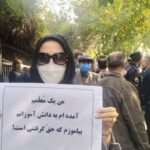

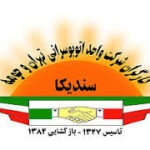






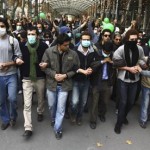
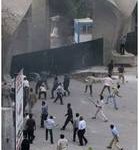
 Posted in
Posted in 